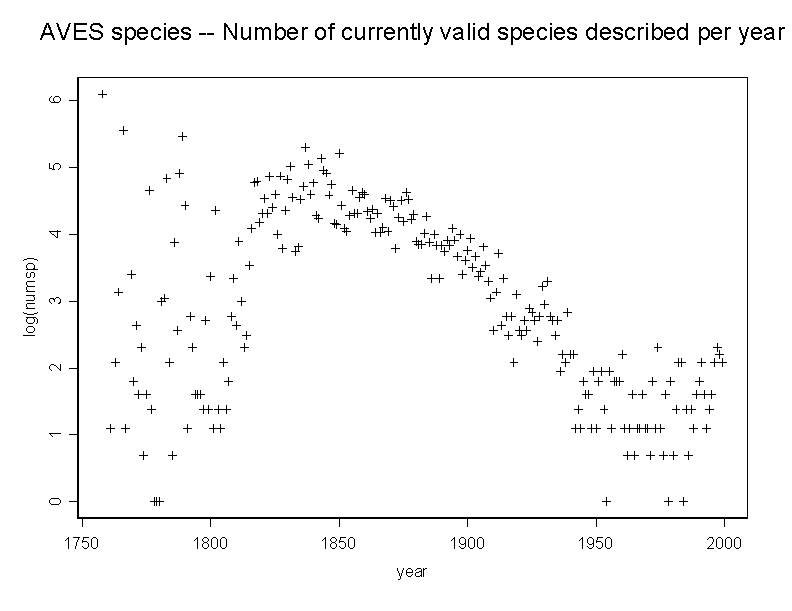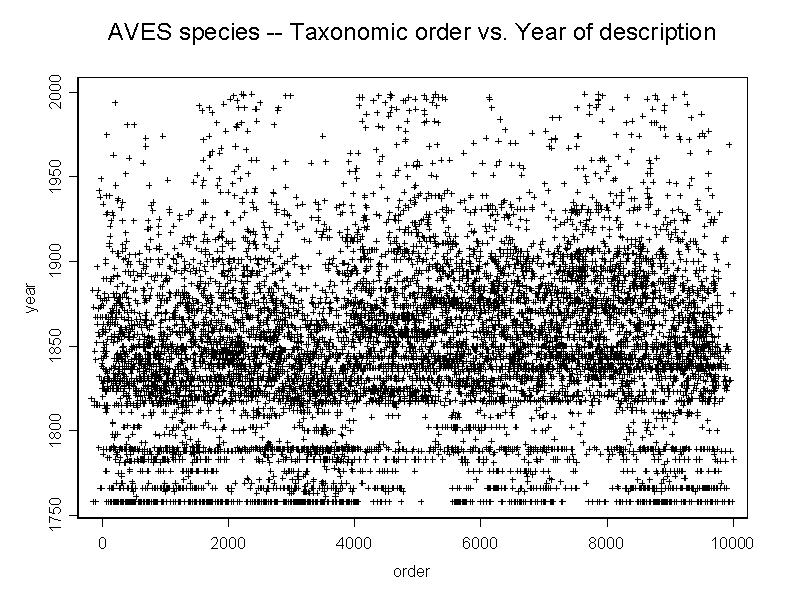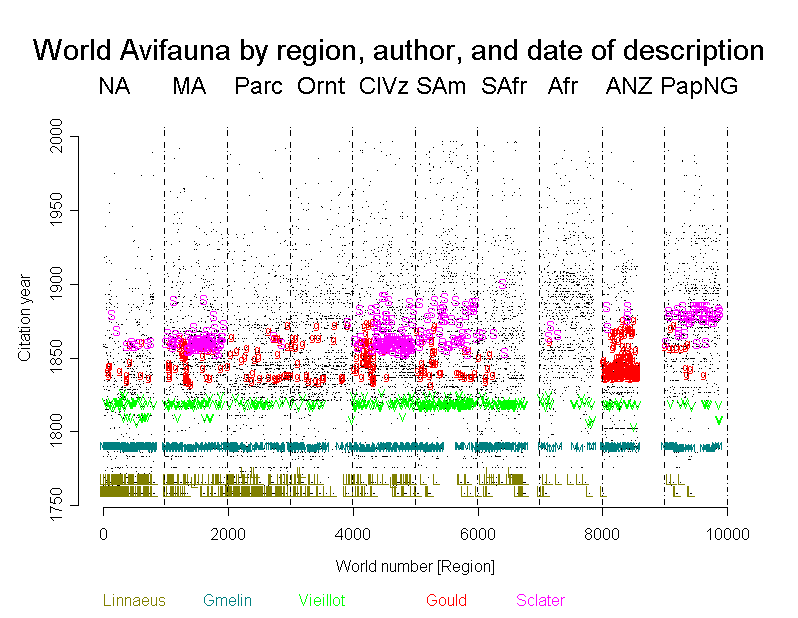
The numbers are plotted as the log of the number, otherwise the large number of taxa described in 1758 suppresses the structure in the rest of the data.
PAGE being developed
This plot shows the number of currently valid species described each year since 1758.

The numbers are plotted as the log of the number, otherwise the large number of taxa described
in 1758 suppresses the structure in the rest of the data.
In the initial period, there is great variablility from year to year. The pattern of acitivity stabilizes in approximately 1815. The activity peaks at about 1837, and then enters a steady peristent decline. Dips in acitivity can be seen that occur at World War I, and World War II.
In the last fifty years the rate of new species descriptions has remained relatively constant
and is perhaps slightly increasing more recently.

Several interesting patterns are present here.
The importance of the ordering on the X-axis is relatively unimportant, though a few patterns result from it, and will be disucssed below.
The most striking feature is the apparent "gap" that is in the lower part of the plot. This "gap" starts at 1790, and extends to 1815. The apparent "floor" of the gap results from the large number of taxa described by Gmelin in 1788, 1789. If the Gmelin taxa (which are mostly Latham taxa that Gmelin applied binomena to) are removed, the "gap" blends in with the rest of the pre-1815 data. The "ceiling" of the gap starts with the large number of taxa described by Vieillot, but it is clear that this pattern of activity continued largely without change, and is not the result of one individual's efforts.
This "gap" does not seem to be present in the other taxonomic groups I have investigated, and that have enough data to reveal the presence of a possible "gap". (I have looked at mammals, fish, lichens, among others).
In the middle portion of the lower portion of the plot, there is a relative paucity of points. This region represents the New World Thamnophilids. These birds evidently were not extensively collected by early collectors, not recognized as distinct taxa by early taxonomists, or both.

Comments&Suggestions to Data Steward
Alan P. Peterson, M.D.
POB 1999
Walla Walla, WA 99362-0999
alanpp@bmi.net
Last updated 2000.03.27